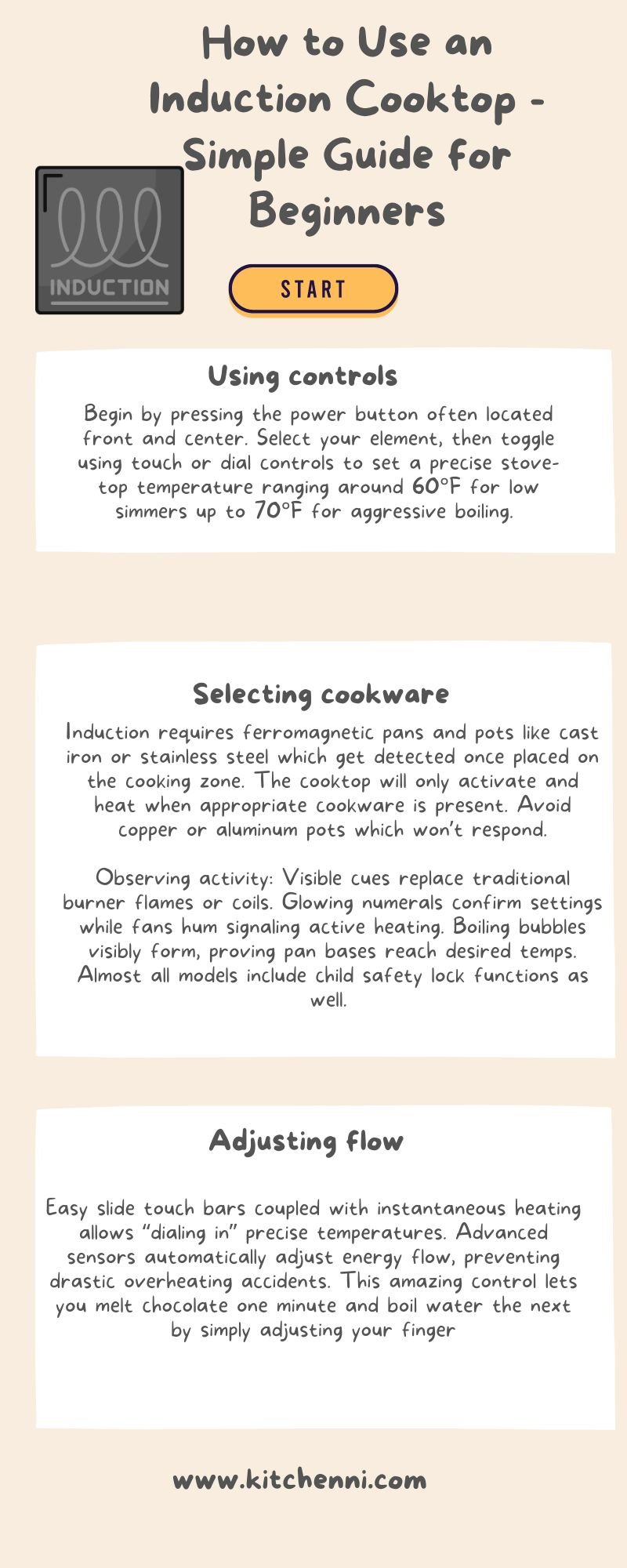Cooking with one of those flat, glass induction cooktops leaves many of us scratching our heads at first. No flames or coils? And more buttons than a space shuttle? How do I even tell if the darn thing is working!?
Lucky for you, I’ve figured out the basics so you can start cooking like a pro on these high-tech ranges! Let me walk you through the easy steps.
Why Go Induction?
I mean, just peek at that crystal clear surface and compare it to the volatile gas or scorching coils. Think about the built-in sensors that know just when to shut down before ruins or injuries can occur.
There are many reasons why induction cooktops win over gas or electric coils, and I’m sure you saw some of them to the point of making that purchase decision.
Here’s a sneak peek of what you stand to enjoy:
- Precision: Slide touchpads give exact temperatures, allowing you to cook complicated recipes flawlessly.
- Safety: External surfaces remain cool-to-touch reducing burns, plus auto shutoffs prevent accidental fires. Many include child lock functions, and keeping little hands safe.
- Efficiency: Circuits only power when detecting a pan, so induction cooktops claim up to 90 percent efficiency, minimizing energy waste for cost and environmental savings.
How to Use an Induction Stovetop – Easy Steps
So, how do you use your new induction cooktop? It’s easy, and while each model has its manual for usage, all of them tend to have the same process from a more general perspective.
How to Use an Induction Cooktop – Simple Guide for Beginners Infographic
Here’s what to keep in mind:
1. Using Controls
Begin by pressing the power button often located front and center. Select your element, then toggle using touch or dial controls to set a precise stove-top temperature ranging around 60°F for low simmers up to 70°F for aggressive boiling. Many models even offer preset power levels (1-10) to indicate intensity.
2. Selecting Cookware
Induction requires ferromagnetic pans and pots like cast iron or stainless steel which get detected once placed in the cooking zone. The cooktop will only activate and heat when appropriate cookware is present. Avoid copper or aluminum pots which won’t respond.
Observing activity: Visible cues replace traditional burner flames or coils. Glowing numerals confirm settings while fans hum signaling active heating. Boiling bubbles visibly form, proving pan bases reach desired temps. Almost all models include child safety lock functions as well.
3. Adjusting Flow
Easy slide touch bars coupled with instantaneous heating allow “dialing in” precise temperatures. Advanced sensors automatically adjust energy flow, preventing drastic overheating accidents. This amazing control lets you melt chocolate one minute and boil water the next by simply adjusting your finger
Make Sure to Use the Right Cookware
Seeking incredible responsiveness begins with selecting proper pans, and bonding directly to electromagnetic surfaces through ferrous metals like cast iron and magnetic stainless steel. Scan for clearly labeled “induction ready” stockpots, pans, and griddles, ensuring compatibility. With quality equipment, induction unlocks next-level precision promised to upgrade family meals.
Induction Cooktop Error Codes
Sometimes you are likely to encounter error codes that render your cooktop unusable. If you ever encounter such a case, refer to the infographic below to learn how to solve them:
Summary
While induction stovetops impress with cutting-edge responsiveness and temperature control, the absence of visible flames and coils leaves many novices puzzled about leveraging this efficiency. But following fundamental operational steps opens limitless potential taking home cooking to the next level. Soon these lightning-fast cooktops will have you excelling at everything from simmering sauces to wok searing with the dialed precision of a top pro chef.
Common Questions
What cookware works best on induction ranges?
Optimal cookware features ferromagnetic metals with high iron content detected by electromagnetic fields to enable heating. Cast iron and magnetic stainless steel work best. Scan product labels confirming “induction ready” status before purchasing.
Why am I experiencing inconsistent heating on my induction burner?
Ensure pots and pans feature completely flat bottoms with no gaps or inconsistencies interfering with direct surface contact. Also verify cookware is induction-approved, avoiding issues with non-ferrous metals like copper or aluminum failing to properly interact limiting heating.
Do I still need to use potholders with an induction cooktop?
Yes absolutely. While induction only heats the vessels themselves keeping exteriors cool-to-touch, pots and pans still reach extreme temperatures from contained heat requiring mitts/potholders for safety while cooking and handling.
Why is my induction making a vibrating or rattling sound?
The alternating magnetic field can vibrate metal vessels at a molecular level, particularly with lightweight cookware materials. Some noise is typical although high-pitched humming could signal failing internal fans requiring replacement to prevent long-term issues or damage over time with continual use.
Why do error messages keep appearing on my induction display?
Flashing error codes indicate a variety of issues ranging from disrupted internal components, overheating incidents or unsupported cookware. Consult online resources correlating the numbered code to possible repairs which may involve replacing fans, sensors or updating cookware failing induction requirements. Don’t ignore consistent warning signs.


